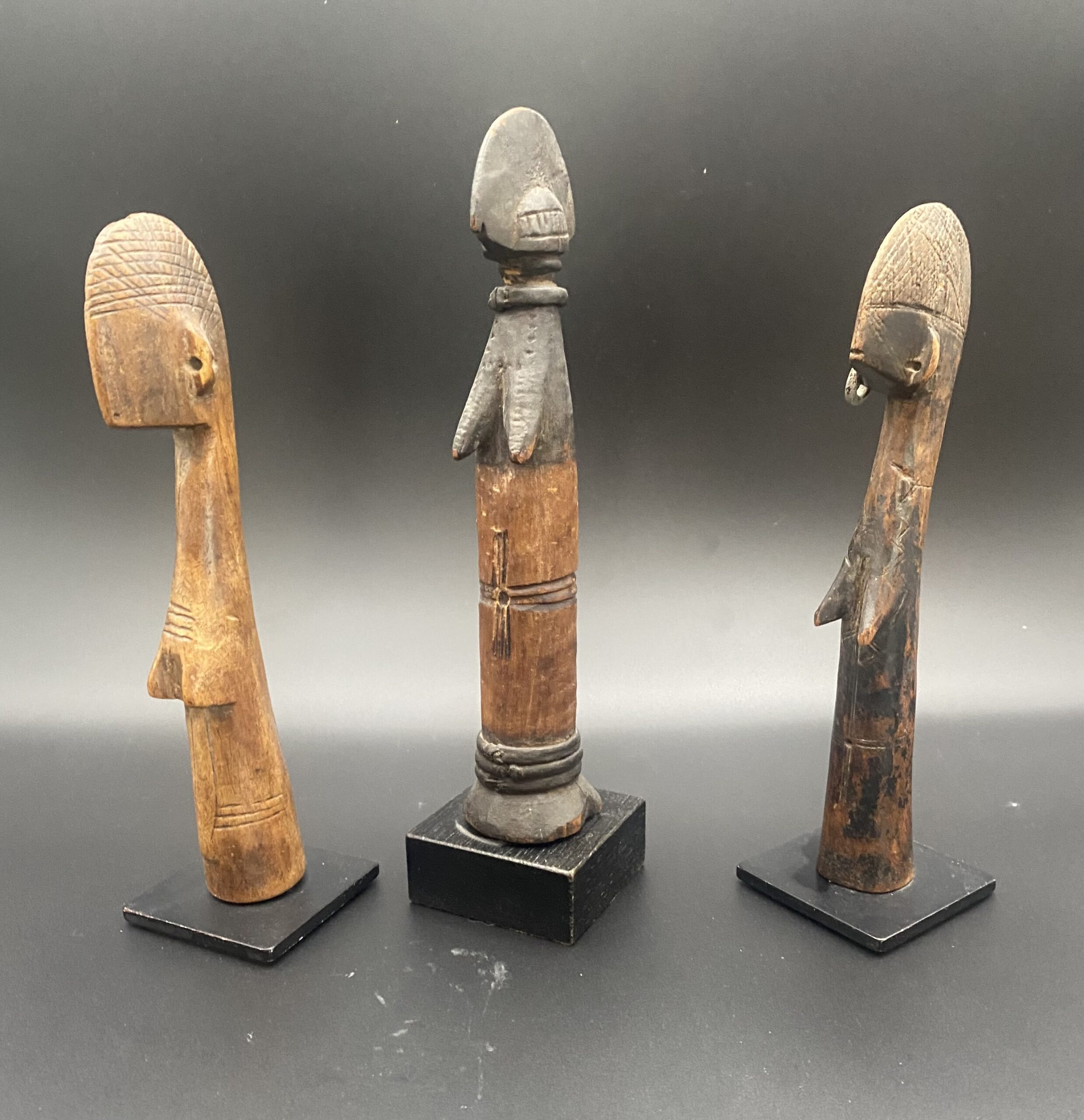Mossi Dolls


- Country: Burkina Faso
- Source: Joel Cooner Gallary, Dallas Texas
- Size (cm): 22
- Material: Wood / Aluminum Earring
Mossi dolls function both as secular playthings for children and as spiritually charged sources of fertility for women. Although minimal and abstract in form, these figures nevertheless embody the most fundamental elements of femininity: finely incised lines on the chest, and stomach reproduce cosmetic scarification obtained by adolescent girls; the stretched breasts are a sign of motherhood; and the head shape typifies the gyonfo or tri-lobed hairstyle worn by married Mossi women in which the central lobe extends from the front to the back of the head. Such dolls may have been commissioned from a smith or purchased at the market. They are given to young girls by their mothers. Like dolls in the western world, Mossi dolls are educational toys used to train little girls for their ultimate and important roles as mothers. In addition to their use as toys, Mossi dolls serve also as fertility aids to newly married young women. They serve two important roles in regard to this function. The first permits the child’s soul to enter the world of the their parents, thus inducing pregnancy. The second assures that the child does not die and return to the world of the ancestral spirits, but will remain with their mother and clan, thus assuring a healthy life. Should conception result from sacrifices made to the spirits, the mother will continue to nurture the doll just as she does her real child. Once a figure fulfills its purpose, it may be kept as an heirloom or given to the child that it helped bring into the world. The unique sculptural form of the Mossi doll encompasses both the symbols of youth and womanhood, ushering a small girl in to womanhood and a young woman into motherhood